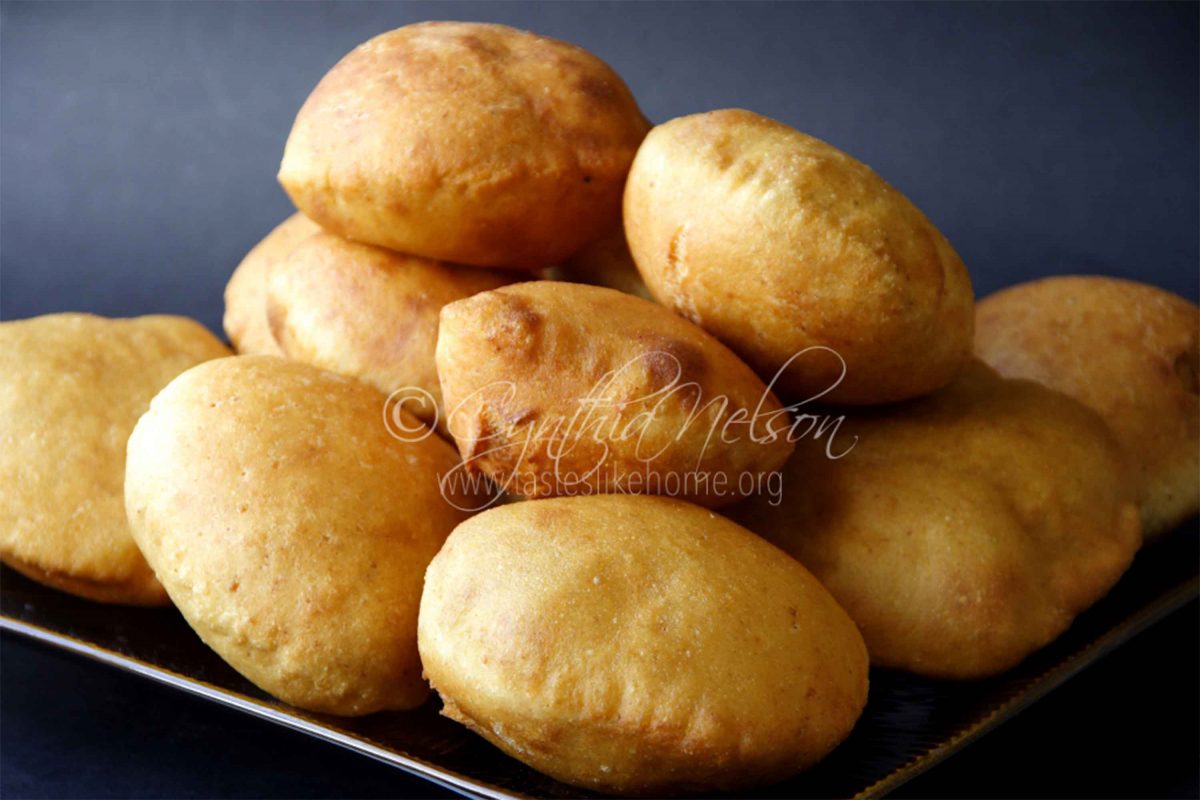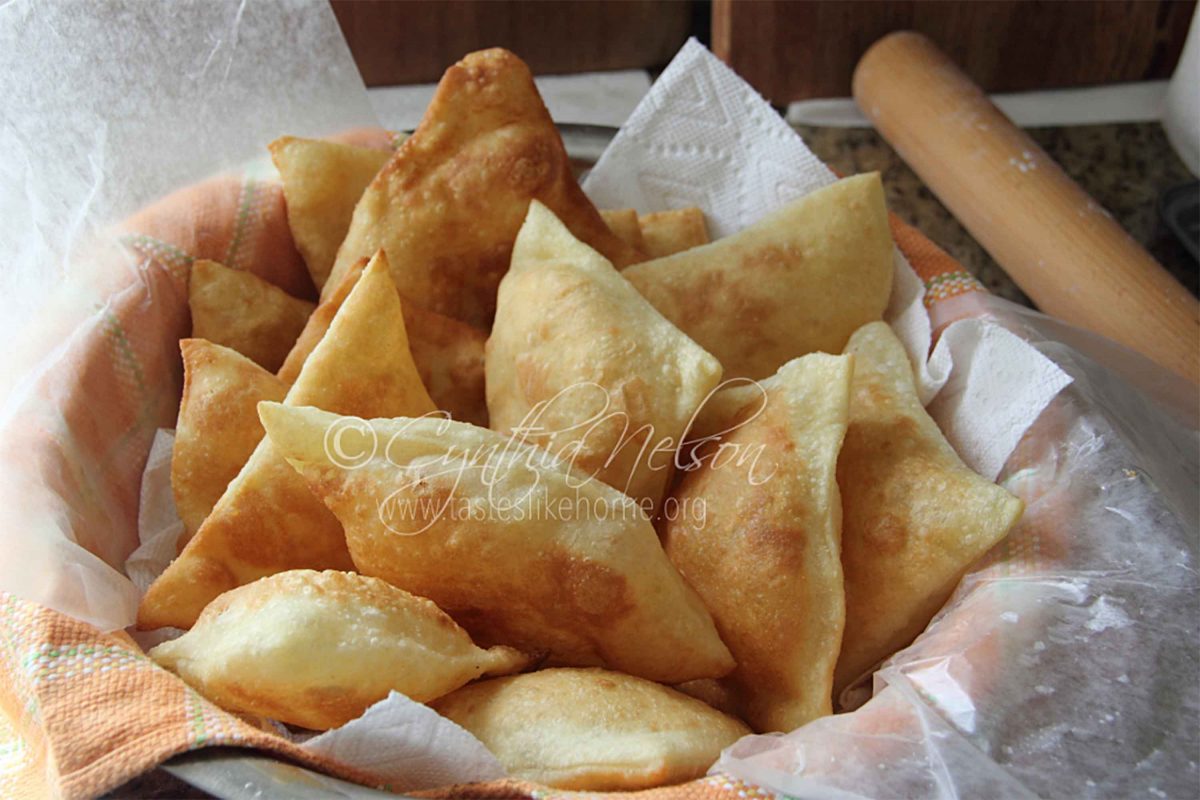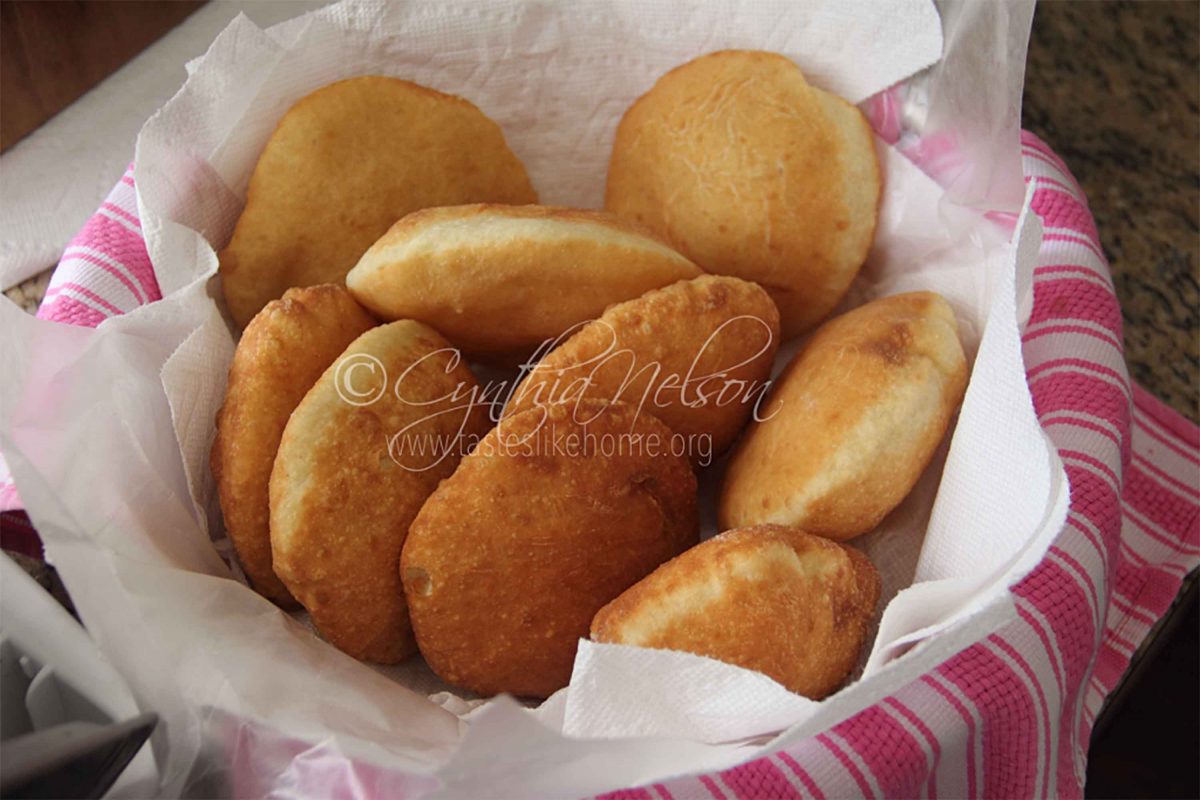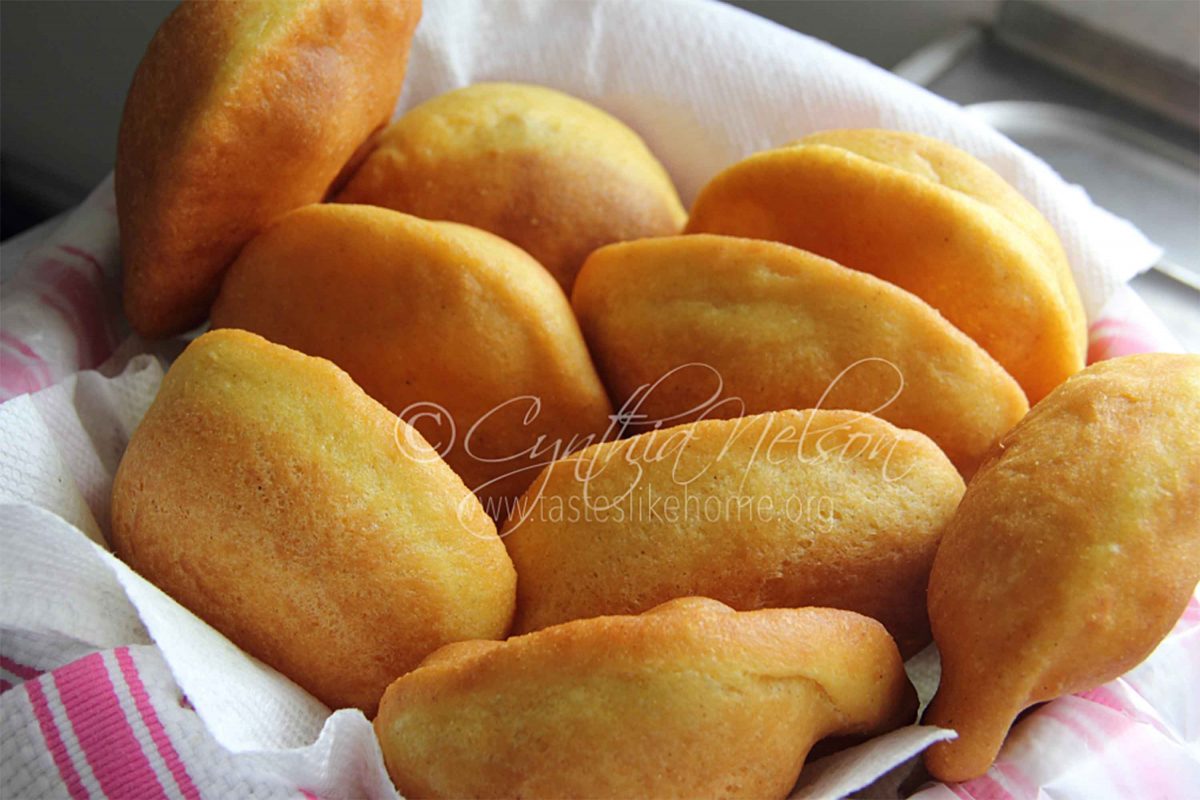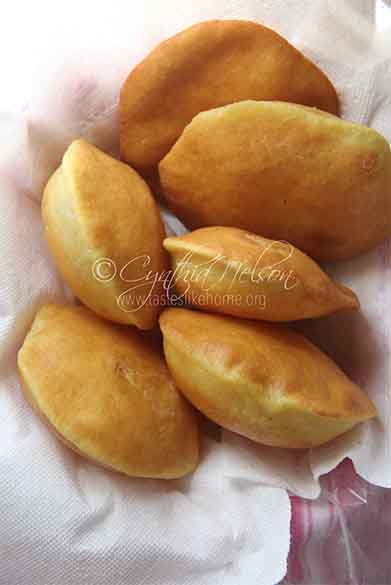
There are few things that are as alluring as hot, soft, fluffy, fried bakes. Floats, as some would describe them. Depending on how thick you roll the dough, they can be meaty on the inside or thinner, creating pockets for all sorts of inserts, fried salt fish being the most popular. Very often, I like to eat the first bake just so, to taste the texture and flavour. I also like it with a daub of butter. Bakes are life. It’s fried dough that puts a smile on everyone’s face.
Bakes, unlike loaf breads or certain types of roti, are not an everyday thing in many households, more like a weekend treat, when there is time, or for an evening meal accompanied by steaming cups of tea, cocoa, Milo, or Ovaltine. Float-bakes are deep fried and because of this we all seek to find ways to make somewhat “healthier” versions to compensate for the frying. I have on several occasions and am here to report that, in my opinion, the best fried bakes are the ones made with regular white all-purpose flour. That has the texture I find to be the best and in terms of the oil factor when it comes to frying, it surpasses that of bakes made with other types of grains/flour. The white all-purpose flour absorbs a lot less oil and reduces the time spent cooking in the oil.
I rarely make bakes because it is just me and bakes are not things that you simply make 1 or 2 of; you have to make at least 6 to 8, given the time, effort and cooking method involved. As I stated above, I wanted to try for a somewhat healthier version and perhaps to test/experiment as well. I have made bakes with breadfruit flour, whole wheat flour, cornmeal flour, coconut flour and semolina flour. I have even tried making the bakes with a half and half ratio of each of the aforementioned flours and regular white all-purpose flour. Though the texture improved, the oil retention was still too much for my liking. I could see the grease on the bakes as they came out of the karahi and as they drained on paper towels; the oil sinking into the crust of the bakes.
The extra oil absorption of the bakes makes sense because the flours/grains are heavier and whole. For example, the amount of liquid needed for hydration for these flours, that is, the amount of water or milk, if using, needed to make the dough is more. And the cooking time for these flours whether frying, steaming, or baking will also be longer. Hence, as I said, the bakes will take a longer time in the frying pan resulting in more oil absorption (and this is with the oil at the right temperature for frying bakes).
The other thing I found when making bakes with other flours is that the texture (obviously) was not the same as that made with all white flour. Do not get me wrong, they were pleasing and yummy, however, when pried open, most of the dough was on one side of the pocket with the other being very thin.
My intention today is not to, in any way, dissuade you from using whatever flours or combination of flours you want to use to make fried bakes. I am simply sharing with you what my experience has been over the years using different types of flours to make fried/float bakes.
Another thing I have done in the past is to add grated cassava to white all-purpose flour to make bakes. The bakes turned out okay and were best eaten hot. I found they did not swell easily, and some were a bit crisp. As they cooled, they became a bit chewy. I will definitely give this a try again though and roll the dough thicker to see what happens. Like the bakes with the other flours, it did spend a little longer in the frying pan, but not as long.
With all this talk of bakes, you know what is happening later today or tomorrow? Bakes baby, with white all-purpose flour!
Cynthia
cynthia@tasteslikehome.org
www.tasteslikehome.org
